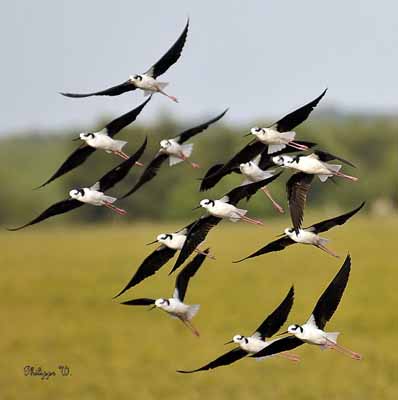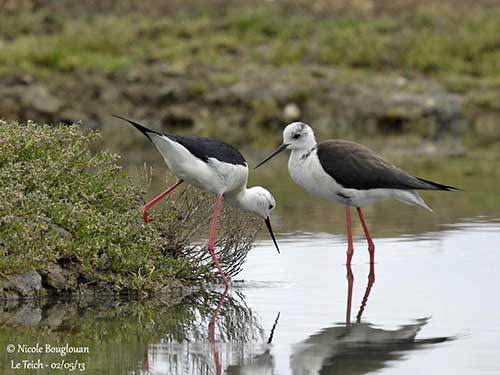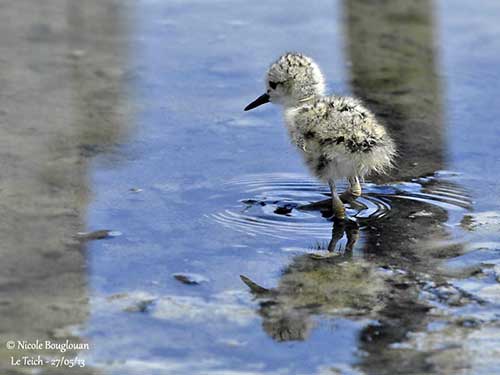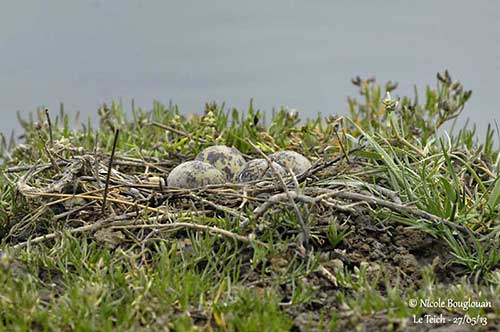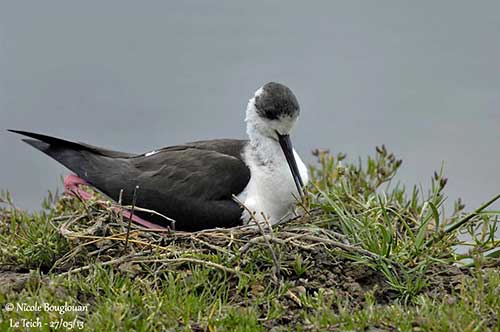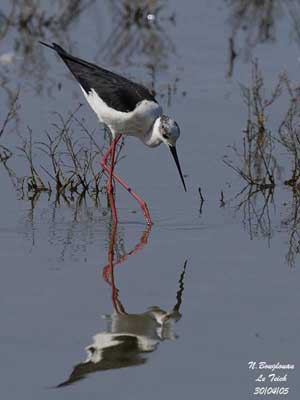
Fr: Echasse blanche
All : Stelzenläufer
Esp : Cigüeñuela de Alas Negras
Ital : Cavaliere eurasiatico
Nd : Stelkluut
Sd : Styltlöpare
Photographers:
Aurélien Audevard
OUESSANT DIGISCOPING
José Luís Beamonte
Pájaros de España
Jean Michel Fenerole
Photos d’Oiseaux
Patrick Ingremeau
TAMANDUA
Jean Marc Rabby
Des Ailes et des Plumes
Photos de Philippe et Aline Wolfer
OISEAUX D’ARGENTINE
Nicole Bouglouan
PHOTOGRAPHIC RAMBLE
Texte de Nicole Bouglouan
Sources:
HANDBOOK OF THE BIRDS OF THE WORLD Volume 3 by Josep del Hoyo-Andrew Elliott-Jordi Sargatal - Lynx Edicions - ISBN : 8487334202
THE HANDBOOK OF BIRD IDENTIFICATION FOR EUROPE AND THE WESTERN PALEARCTIC by Mark Beaman, Steve Madge - C.Helm - ISBN: 0713639601
SHOREBIRDS by Peter Hayman, John Marchant and Tony Prater – Christopher Helm – 1986 – ISBN: 0747014035
GUIDE DES LIMICOLES de D. Taylor - Delachaux et Niestlé - ISBN : 2603014080
ENCYCLOPEDIE DES OISEAUX DE FRANCE ET D’EUROPE – de Peter Hayman et Rob Hume - Flammarion – ISBN : 2082009920
BirdLife International (BirdLife International)
Birds in backyards (Birds Australia and Australian Museum)
Black-winged Stilt
Himantopus himantopus
Charadriiforme Order – Recurvirostridae Family
BIOMETRICS:
Length: 35-40 cm
Weight: 165-205 g
PHYSICAL DESCRPTION:
The Black-winged Stilt is a black and white shorebird, perched on very long and fine pink legs, giving the bird an elegant gait.

The adult male in breeding plumage has black and white plumage with all-black wings and upper back with greenish iridescence.
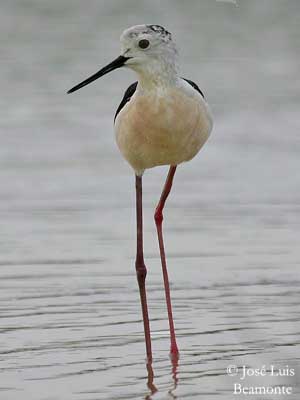
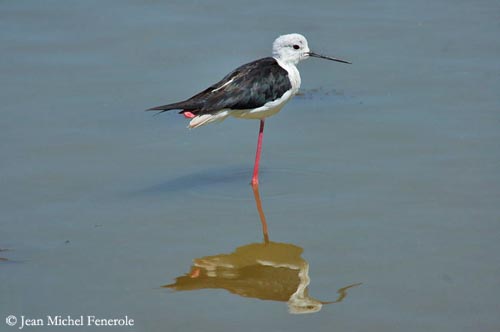
Head shows white face and forehead, and black top of the crown. Eyes are red. The long, thin bill is black and straight. Very long legs and feet are reddish-pink.
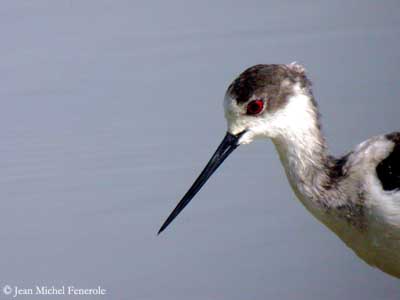
The female in breeding plumage is almost similar but more brownish on the upperparts with sometimes greyish wash on nape and rear neck.
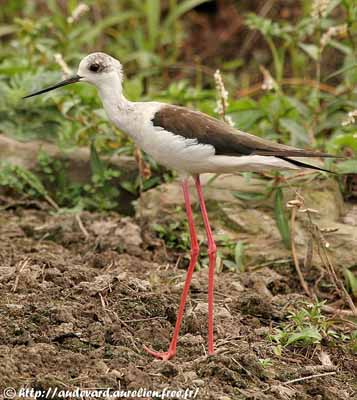
In winter plumage, both are similar to the breeding female but duller, with variable grey wash on head and rear neck.
The juvenile is paler than adult, with washed grey-brown crown and rear neck. The brownish upperparts show narrow pale buff fringes, and legs are duller.
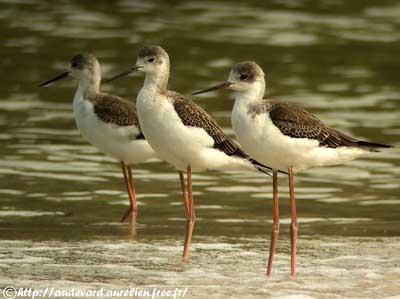
We have four subspecies:
Himantopus h. himantopus lives in Eurasia, India and Africa.
Himantopus h. knudseni lives only in Hawaï. It is very rare and endangered due to habitat loss.
Himantopus h. melanurus lives in South America.
Himantopus h. leucocephalus lives in Java and New Guinea, S Australia and New Zealand.
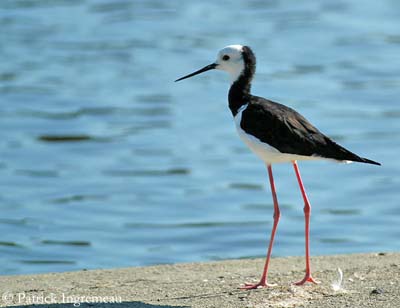
They differ in head and rear neck colour and pattern, but all are black and white.
The Black-necked Stilt, formerly Himantopus (h.) mexicanus living in North America, to northern South America, is now a full species.
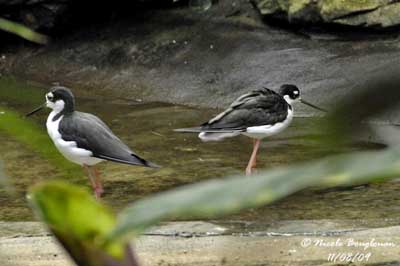
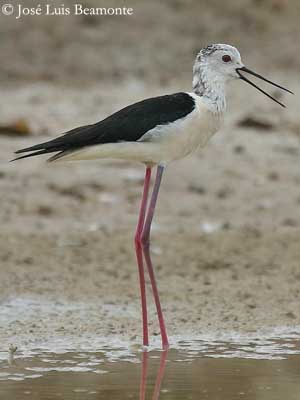
VOICE:
The Black-winged Stilt’s calls are a sharp “kek” and a barking “ke-yak”. Alarm call is a monotonous, high-pitched “kik-kik-kik-kik-kik-kik”.
They are noisy on their breeding areas.
HABITAT:
The Black-winged Stilt lives mainly in freshwater and saltwater marshes and mudflats, shallow lakes, coastal lagoons, flooded fields and rice fields.
RANGE:
The Black-winged Stilt has wide range. We can find it in Australia, Central and South America, Africa, Asia, parts of North America, Eurasia, Hawaii and Philippines.
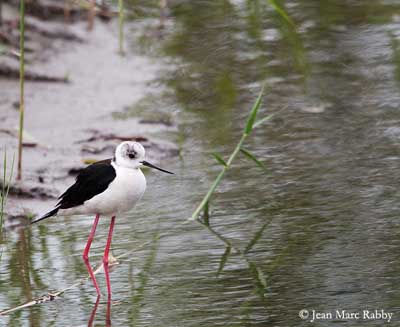
BEHAVIOUR:
The Black-winged Stilt feeds in shallow water, wading and catching preys on or near the surface. But sometimes, it plunges the head under the surface to capture some aquatic invertebrate. It picks up its food from sand or water.
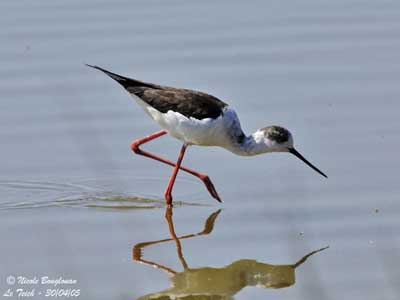
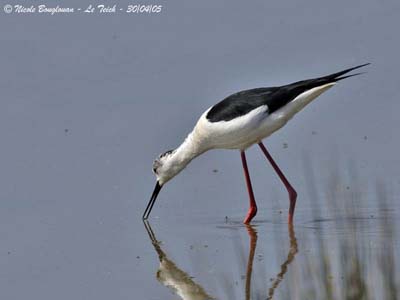
Its very long legs allow it to walk in deeper water than other waders. This bird rarely swims for food. The Black-winged Stilt is an active forager, and it can employ several methods to catch prey.
This species is well adapted to nocturnal vision, which allows them to feed on windy, moonless nights. Stilts walk quickly, with long strides, wading into water.
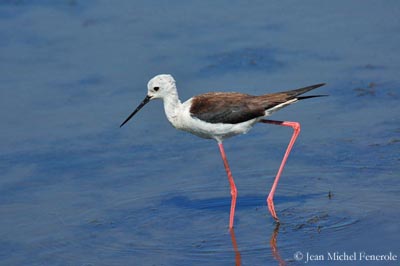
The Black-winged Stilt is a migratory bird, moving to the ocean coasts in winter. European birds winter in sub-Saharan Africa. They are often seen in flocks of 10 to 20 birds, and also in mixed flocks with other species of shorebirds.
The Black-winged Stilt nests in small colonies of 2 to 50 pairs, and mated pairs defend vigorously their nest site and territory. They may nest in mixed groups with avocets.
They are gregarious and may feed in large flocks of several thousands birds. When alarmed, the birds often bob their head.
FLIGHT:
The Black-winged Stilt has rapid direct flight, with steady wing-beats. Legs are projected behind the tail of up to 20 cm, and neck is slightly held.
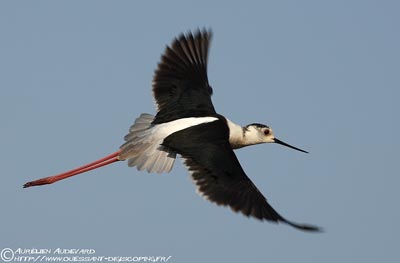
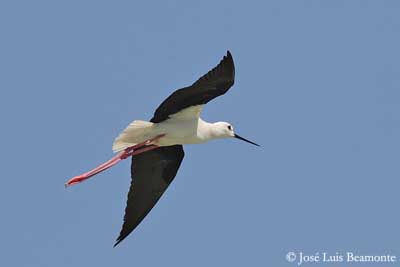
REPRODUCTION:
The Black-winged Stilt’s nest is a shallow scrape on the ground. It is located on a mound of vegetation, in water on floating water weeds, or near water on the shore.
The female lays 4 eggs between mid-May and mid-June. Incubation lasts about 25 days, by both parents. Chicks are precocial and leave the nest very soon, remaining hidden in aquatic vegetation. They are fed by both parents. They fledge at about 4 weeks after hatching, and they become independent 2 to 4 weeks later.
They can breed at about one or two years of age.
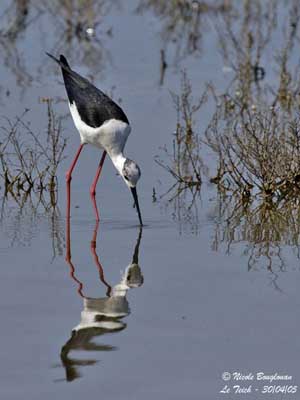
DIET:
The Black-winged Stilt feeds on aquatic insects, worms, tadpoles, water bugs and beetles and fly larvae, molluscs and spiders. Occasionally, it will consume seeds.
PROTECTION / THREATS / STATUS:
The Black-winged Stilts are not globally threatened. They depend on predator control and protection of breeding habitats. Populations seem to be stable.
Hawaiian subspecies “knudseni” is endangered.
